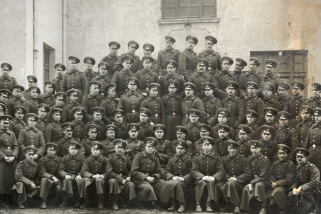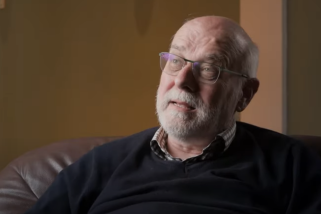In the Heart of the Great War.
The Individual at the Crossroads between the Civilian and Military Worlds
26-28 October 2017
Mons Memorial Museum in Mons, Belgium
Deadline : 3 March 2017
The 2016 Summer School organised by the International Research Centre of the
Historial de la Grande Guerre de Péronne has led to many exchanges and debates
which needed to be prolonged and perpetuated. In that sense, we invite papers
for a symposium directed at young researchers, such as graduate students and
PhD students. The organisers intend to publish the proceedings of this
conference at a later date.
The historiography of World War I has been largely built upon the basis of
separation between the History of battles on one side and occupied populations
and the home front on the other. Nonetheless, to reason with this image is to
forget that World War I, as total warfare, has set new means of meeting,
coexisting and cohabitating between the civilian and the military spheres.
From the military front to the home front, and through occupied territories, the
war experience is a crossway, perhaps even an interaction between the civilian and
military worlds, as the expression ‘home front’ suggests.
For the people subjected to military service, the general mobilization is
certainly a deep rupture with life before the war: especially the family and
the village. However, the acceptance of the conflict must also be understood
in terms of a continuity, which re-imagines the process of training for the
civilian, who, from the school playground to the army barracks, is predisposed to war. Similarly,
the spirit of the combatants cannot be viewed without considering a recurring
and essential element in their way of thinking—the home front—meaning both
memory and hope. Ignoring the relationship between the civilian and military
world would also be forgetting that most soldiers during the Great War were
civilians wearing uniforms.
In the midst of this intersection, there also is the need to question the
transference of practice from the civilian sphere to the military sphere.
Similar comments on the porous nature of these two spheres are applicable to
populations in occupied territories and in the home front. War invites itself
into lives, homes and families, thus becoming an integral part of everyday
life. In occupied territories, from collaboration to resistance, the civilian
response to occupiers’ presence shows the intrusion of the military into the
civilian sphere. In this way, civilians adapt and interpret the military,
bringing new behaviors. After the war, actions towards the collaborators, as
those towards women, called femmes à boches, tell of a conflict extending to
the most private and intimate spheres of the social life of the occupied
societies. Furthermore, home front should not be reduced to war effort or
Union Sacrée but reassessed in order to discover the complexity of civilians’
relationship to military affairs.
Far from denying the necessary distinction between the radically different
experiences of the soldier and of the people under occupation or in the home
front, we have to bring back the individual in the same approach: the human
being at war, an actor at the heart of the intervention on the military and
civilian fields. This analytical grid, largely inherited from a renewed
historiography of the First World War, which tends to put the individual at
the centre of the discussion, supports our argument. Beyond a simple encounter
between civilians and soldiers, the purpose of this reflection is to grasp how
the human being integrates and associates these two realms, narrates this
junction, and how one shows and expresses one’s choices and behaviours,
individual or collective.
Expected proposals will discuss this link
between the civilian and military worlds in the Great War, but may also extend
across a longer timeframe. The geographical frame of the subject is not
limited to European events, but can also stretch out to other places of confrontation,
in order to question the relevance of this interpretative framework to all the
warring countries. Proposals should be approximately one page in length.
Applications should also be accompanied by a short CV. Please submit proposals
to intheheartofthegreatwar@gmail. com by 3th March 2017. The working language
of the conference is French and English.
The symposium will take place from 26th to 28th October 2017 at the Mons
Memorial Museum in Mons, Belgium. Expenses for accommodation and travel will
be cover insofar as possible. We invite you to ask first to your institution.
Website: intheheartofthegreatwar. wordpress.com
Scientific Committee
Luc Capdevila (professor / Université Rennes 2)
Emmanuelle Cronier (maître de conférence / Université de Picardie – Jules
Verne)
Emmanuel Debruyne (professor / Université catholique de Louvain)
Franziska Heimburger (maître de conférence / Université Paris-Sorbonne)
Chantal Kesteloot (head of department Public History / CEGESOMA)
Benoît Majerus (assistant professor / Université du Luxembourg)
Markus Pöhlmann (researcher / Zentrum für Militärgeschichte und
Sozialwissenschaften der Bundeswehr)
Axel Tixhon (professor / Université de Namur)
Laurence van Ypersele (full professor / Université catholique de Louvain)
Conference Committee
Emmanuel Debruyne (professor / Université catholique de Louvain)
Erwan Le Gall ( PhD candidate / Université de Rennes 2)
Gwendal Piégais (Université catholique de Louvain)
Élise Rezsöhazy (F.R.S.-FNRS research fellow / Université catholique de
Louvain)
Axel Tixhon (professor / Université de Namur)













